
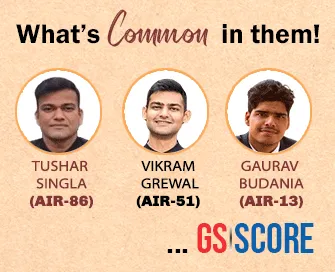
21st February 2025 (11 Topics)
Mains Issues
Context
US President Donald Trump recently accused Ukraine of "breaking" a deal related to the use of its mineral resources. Although the deal was never signed, Trump’s comments highlight the growing geopolitical and economic importance of Ukraine's mineral reserves, which play a crucial role in global manufacturing, including for high-tech and defense industries.
What are Critical Minerals?
- Critical minerals are elements crucial for national security and economic development, particularly in industries like defense, electronics, clean energy, and infrastructure.
- Rare Earth Elements (REEs) and critical minerals are essential for manufacturing high-end products such as weapon systems, electrical vehicles (EVs), electronic gadgets, and semiconductors.
- There are 17 rare earth elements (REEs) such as lanthanum, yttrium, and scandium, which are indispensable for advanced technologies.
- Critical minerals, defined by a country's needs, are minerals that are vital for these sectors but are difficult to access, often due to geographical or political constraints.
Ukraine’s Mineral Resources:
- Ukraine possesses a significant quantity of mineral resources, making it an attractive partner in global supply chains for critical minerals. Ukraine holds:
- 22 of the 50 strategic minerals identified as critical by the United States.
- 25 out of the 34 critical minerals recognized by the European Union (EU).
- Among these, Ukraine is particularly rich in five key minerals:
- Graphite
- Lithium
- Titanium
- Beryllium
- Uranium
- These minerals are vital for the production of high-tech weapons, clean energy solutions (such as EV batteries), and electronic devices. The importance of these resources has made Ukraine a target for global powers, especially in the context of US-China competition over critical minerals.
Why Does the US Want Ukraine's Mineral Resources?
The US's interest in Ukraine’s mineral resources stems from both economic and security reasons:
- China’s dominance in critical minerals, such as rare earths, poses a risk to US technological and defense industries. Access to Ukraine’s resources would diversify and secure the US supply chain.
- National security: If the US were granted access to these resources, it would ensure access to raw materials necessary for defense and technology industries, reducing dependency on China and strengthening its geopolitical position.
What Did Trump Propose?
- The US proposed a deal where it would be granted access to 50% of Ukraine’s critical mineral resources in exchange for the military and economic support the US has already provided in Ukraine’s fight against Russian aggression. The key points of the proposal are:
- The US would gain economic stakes in Ukraine, such as mining rights and other resources, effectively controlling access to a large portion of Ukraine’s critical minerals.
- In return, the US would provide continued military and economic support, with the goal of ensuring Ukraine's defense against Russia, and thereby ensuring its resources' security.
- Why Was the Deal Rejected by Ukraine?: Ukraine was open to negotiations but sought more favorable terms. The deal proposed by the US was perceived as insufficiently protective of Ukraine’s sovereignty and long-term interests. Zelenskyy emphasized that the deal was not ready to protect Ukraine’s interests adequately, and hence, no formal agreement was signed during the Munich Security Conference.
Challenges for the US Proposal:
There are several obstacles to the successful execution of this deal, including:
- Legal and Constitutional Issues: Ukraine's Constitution states that subsoil resources belong to Ukrainians. Thus, any agreement involving mineral extraction would have to comply with Ukrainian law and respect its sovereignty.
- Uncertainty Over Resource Availability: Much of the critical mineral data is outdated. Many geological surveys were conducted during the Soviet era, and the exact quantity and quality of the resources remain unclear.
- Large-scale extraction has not occurred, and much of Ukraine’s mineral reserves remain underexplored.
- Existing EU Deal: Ukraine already has an agreement with the European Union to extract and process its raw materials. This deal, signed in July 2021, establishes a strategic partnership between the two parties for the shared development of Ukraine’s mineral resources.
- Russian Occupation of Key Resource Areas: A significant portion of Ukraine’s critical mineral resources is located in regions currently under Russian occupation, including important deposits of lithium. This complicates access and extraction and reduces the resources available to Ukraine.

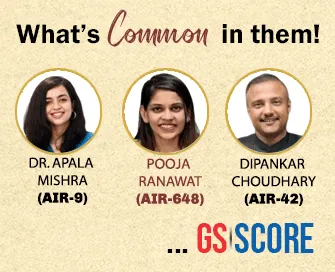
Mains Issues
Context
The Supreme Court of India suspended the Lokpal’s order, which allowed the Lokpal (India’s anti-corruption ombudsman) to investigate complaints against high court judges. The Supreme Court criticized this interpretation of the Lokpal’s jurisdiction, calling it "very disturbing."
What Happened (brief background)?
- The Lokpal had ruled that it could probe complaints against high court judges under the Lokpal and Lokayuktas Act, 2013.
- This came after it decided to entertain complaints against a sitting high court judge, accusing him of influencing an additional district judge and another high court judge in a case. The complainant alleged that the high court judge had favoured a private company that had been his client when he was a lawyer.
- However, the Supreme Court intervened, questioning whether high court judges should be considered “public servants” under the 2013 Act, which is primarily designed to address corruption in other sectors of the public service.
Why Did the Supreme Court Suspend Lokpal's Order?
- The Supreme Court bench expressed that high court judges should not fall under the jurisdiction of the Lokpal Act because their appointment is governed by the Constitution rather than by any parliamentary law.
- The court emphasized that judges are not the same as other public servants in government positions.
- Additionally, the bench questioned the Lokpal’s reliance on pre-Constitution provisions and clarified that judges are appointed under the Constitution after its enactment, making them distinct from officials governed by parliamentary laws.
- Disapproval: The Supreme Court expressed its strong disapproval of the Lokpal’s decision to entertain complaints against sitting high court judges.
- The bench made it clear that they did not agree with the Lokpal’s interpretation and ordered that the Lokpal’s decision be stayed. It also restrained the complainant from further disclosing the judge's name or lodging additional complaints against the same judge.
Key Legal Issues
- Jurisdiction of Lokpal: The central issue is whether high court judges come under the purview of the Lokpal and Lokayuktas Act, 2013. The Supreme Court found the Lokpal’s stance problematic, emphasizing that judges' appointments and actions are defined by the Constitution and not by parliamentary laws that the Lokpal Act covers.
- K Veeraswami Judgment (1991): The Supreme Court’s landmark decision in the K Veeraswami vs Union of India (1991) case clarified that judges are public servants under the Prevention of Corruption Act, 1988. However, it laid down a crucial safeguard: no investigation against a judge could take place without prior sanction from the Chief Justice of India (CJI). This was to ensure judicial independence while holding judges accountable.
- Constitutional Provisions: The Constitution of India governs the appointment, tenure, and removal of judges. Articles 124 and 217 specify the process for removing Supreme Court and high court judges, which requires impeachment by Parliament for proven misconduct.
Fact Box:High Court and Judges in India
About Lokpal
|


Mains Issues
Context
In a significant ruling on the rights of prisoners, the Supreme Court has directed states with remission policies to consider the premature release of prisoners, even if the prisoners do not submit an application for remission beforehand. This decision marks a shift in the court's approach, as it now allows for suo motu (on its own initiative) release of prisoners under certain conditions.
Background of the Case
- The case, “In Re: Policy Strategy for Grant of Bail,” is a suo motu case that the Supreme Court initiated in 2021 to address the issue of overcrowding in prisons.
- The ruling came as part of the court’s effort to find a solution to the prison system’s struggles with overcrowding, ensuring that prisoners eligible for remission are considered for early release.
- Supreme Court's Ruling: The Court noted that several states already have remission policies in place that lay out eligibility criteria for remission.
- As a result, it held that states must exercise their discretion and consider all eligible convicts for premature release, even if they do not apply for remission themselves.
- The Court also emphasized that failing to do so would be discriminatory and arbitrary, violating Article 14 (Right to Equality) of the Constitution of India.
Reasons for the Shift
The Court justified its shift in approach by highlighting that:
- Prison manuals in many states already require prison authorities to initiate proceedings for granting remission.
- In the earlier cases, the Court had not considered a scenario where a policy for remission was already in place, making the requirement for an application by the convict redundant.
- The previous rulings aimed to prevent arbitrary releases, especially on festive occasions, but with structured remission policies, the risk of arbitrary releases can be mitigated.
What is the Law on Remission?
Prison Population in India
|

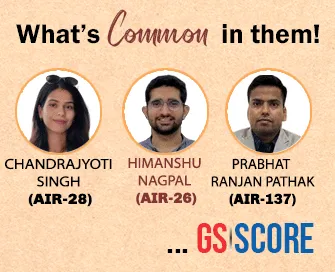
Mains Issues
Context
Economic growth can be understood through the interaction of two fundamental forces:
- Supply (production of goods and services)
- Demand (expenditure to purchase goods and services)
The growth of an economy depends on a balance between these two components.
Economic Growth & Balance between Supply and Demand:
- Supply Side represents the production of goods and services, measured by GDP, which reflects the value added during the production process.
- Demand Side consists of expenditures on goods and services, broken down into:
- Private Consumption (C): Expenditures by individuals on basic goods and services.
- Private Investment (I): Spending by businesses and households on capital goods like machinery and construction.
- Government Expenditure (G): Includes both consumption and investment by the government.
- Net Exports (E-M): The difference between a country's exports and imports.
When demand exceeds supply, inflation rises. Conversely, if demand lags behind supply, excess inventory, reduced production, and layoffs may result in economic slowdown.
What is the role of investment (and Its Multiplier Effect)?
- Investment plays a pivotal role in driving economic growth. For instance, an investment in infrastructure, such as building highways, triggers a chain reaction:
- Workers and firms involved in the construction process earn income, which fuels further demand.
- New infrastructure stimulates the development of shops, industries, and more businesses.
- This effect, known as the multiplier effect, leads to a larger than expected increase in GDP.
- The multiplier effect varies depending on the nature of the investment and the existing economic infrastructure. Investments in underdeveloped areas tend to have a higher multiplier.
- · Consumption vs. Investment: Consumption generally has a weaker multiplier compared to investment. An increase in consumption boosts demand, but the resulting increase in income isn’t always proportionate across the economy. Consumption alone cannot drive significant growth like investment can.
Challenges with India’s Investment Growth:
- Stagnating Investment: Investment in both public and private sectors has stagnated, especially in corporate sectors. Although household investments in housing have shown some vitality, private sector reluctance to invest (due to weak confidence, or "animal spirits") has been a significant barrier to sustained growth.
- The Indian Government's Role: The government’s reluctance to substantially boost public investment, as seen in the most recent budget, may result in continued low growth. The failure to significantly raise government spending or take bold measures to stimulate private investment presents a risk to India's economic prospects.
Case Study:(Comparison: India vs. China’s Growth Models)
|

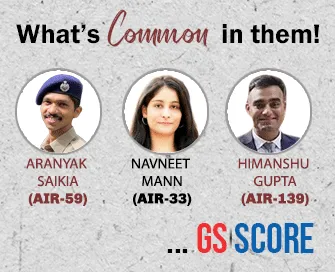
Mains Issues
Context
Northeast India has faced prolonged insurgency, but over the last few decades, parts of the region have witnessed relative peace, facilitating infrastructure and economic development. However, the situation remains complex due to ongoing political developments in neighboring Myanmar, which have had significant security, economic, and humanitarian impacts on India’s northeastern states, particularly Manipur, Mizoram, and Nagaland.
Political Instability in Myanmar and its Spillover Effects
- Military Coup in Myanmar (2021): The coup in Myanmar led to widespread civil disobedience and armed resistance. The conflict lead to large-scale violence, particularly in the Sagaing Region, Chin, and Kachin States, bordering Northeast India.
- Displacement of Refugees: The violence in Myanmar triggered a large-scale refugee exodus into India. As of 2024, approximately 95,600 refugees from Myanmar have entered India, with the majority fleeing after the coup in 2021. These refugees have created both humanitarian challenges and security concerns within India’s northeastern border states.
Impact on India’s Border Management
- Free Movement Regime (FMR): A border cooperation arrangement that allowed residents within a 16 km radius of the India-Myanmar border to move freely across the border without visas. The regime, initially aimed at promoting cross-border trade and cultural interaction, has been impacted by the recent security dynamics.
- Refugee Crisis and Internal Security: The movement of refugees from Myanmar has led to concerns over ethnic tensions in Manipur, where the influx has aggravated existing disputes between the Meitei and Kuki The situation has also stressed border security and management.
- Economic Disruptions:
- Moreh, a key border town in Manipur, once a bustling trade hub, has experienced a significant decline in cross-border trade. This has derailed plans for India-Myanmar-Thailand trilateral connectivity, affecting Northeast India's potential as a gateway to Southeast Asia.
- Border Trade and Economic Engagement: Plans to expand economic engagement and trade with Myanmar, as part of India’s Act East Policy, have slowed down due to the volatility in Myanmar.
India’s Policy Responses and the Regional Strategic Landscape
- Abolition of Free Movement Regime: The Indian government has decided to reduce the scope of the FMR in response to internal security concerns, particularly the changing demographic and ethnic dynamics in the Northeast. A new framework allows people within 10 km of the border to cross with a permit at designated entry points.
- China’s Role in Myanmar: Unlike India, China has greater flexibility to engage with Myanmar's ethnic groups and the Tatmadaw due to its permanent membership in the UN Security Council (UNSC). It has leveraged its relationship with Myanmar’s armed groups to tackle cross-border drug syndicates and criminal activity while securing its border with Myanmar.
- Indian Strategic Priorities: India must balance its security, humanitarian relief, and economic growth objectives in the region. Despite the current crisis, India aims to maintain economic connectivity with Southeast Asia, but political instability in Myanmar has led to a delay in regional projects like the India-Myanmar-Thailand trilateral highway.
Urgent Measures for Peace and Development
- Humanitarian Assistance: India needs to provide humanitarian relief to refugees and develop healthcare and educational infrastructure in Myanmar's border regions to alleviate the pressure on India’s border states. This will help reduce the influx of refugees seeking basic services in India.
- Engagement with Ethnic Organizations: It is essential to engage ethnic organizations in Myanmar and facilitate dialogue to stabilize the situation and address the root causes of conflict. In the long run, promoting a federal democratic polity in Myanmar can reduce tensions.
- Border Security and Economic Policy: India must enhance border management by securing its borders while ensuring continued economic engagement with Myanmar and Southeast Asia. The goal should be to promote peace and economic cooperation once the security situation stabilizes.
India’s Northeast
Key Policy Initiatives
|


Prelims Articles
Context
Amritpal Singh, the incarcerated Member of Parliament (MP), has filed a petition in the Punjab and Haryana High Court requesting permission to attend the ongoing Parliament session. His absence from the sessions could potentially lead to the loss of his seat due to prolonged non-attendance, as per the provisions of Article 101(4) of the Indian Constitution.
What is Article 101(4) of the Constitution?
- As per Article 101(4) of the Constitution:
- If an MP is absent for 60 consecutive days without permission, the House can declare their seat vacant.
- The 60-day period excludes adjournments or prorogations of the House.
- However, there are provisions for MPs to seek leave from the House. In practice, MPs who are absent for long periods generally apply for leave through the Committee on Absence of Members. This committee reviews requests for leave and typically approves them, unless there are strong reasons for rejecting them.

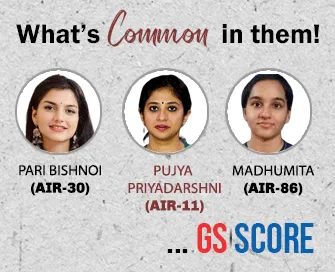
Prelims Articles
Amid increasing complaints about transmission of obscene, pornographic and vulgar content, the Ministry of Information and Broadcasting has warned OTT platforms against transmitting content that is prohibited by the law.
Key-points made by Ministry
- Ministry of Information and Broadcasting directed OTT platforms and their self-regulatory bodies to comply with the provisions of applicable laws and the Code of Ethics outlined in the Information Technology (Intermediary Guidelines and Digital Media Ethics Code) Rules, 2021.
- Citing Part III of the IT Rules, 2021, the ministry emphasized that OTT platforms must adhere to a three-tier institutional grievance redressal mechanism and a Code of Ethics that prohibits transmitting content banned by law.
- The advisory also urges self-regulatory bodies to proactively monitor adherence to the Code of Ethics.
- It references legal provisions such as the Indecent Representation of Women Act 1986, the Bhartiya Nyay Sanhita (BNS) 2023, the POCSO Act and the IT Act 2000, which prohibit the distribution of obscene, pornographic or sexually explicit content.
Existing Regulatory Framework for OTTs
|


Prelims Articles
Context
The Uttarakhand Cabinet approved the Bhoo Kanoon (Land Laws) amendment, which imposes stricter regulations on the purchase and sale of agricultural, horticultural, and residential lands by non-residents in 11 hill districts. The amendment aims to protect the state’s resources, culture, and the rights of local citizens.
What is Bhoo Kanoon?
- Bhoo Kanoon refers to the land laws in Uttarakhand, which govern the purchase, sale, and ownership of land in the state.
- These laws are designed to regulate land transactions, particularly concerning non-residents (outsiders) and to protect the interests of the local population, agriculture, and cultural heritage.
- Key Aspects of Bhoo Kanoon:
- Restrictions on Non-Residents: The law imposes strict restrictions on non-residents purchasing land, particularly agricultural land, in sensitive or hilly areas to prevent the exploitation of land by outsiders.
- Earlier, non-residents could purchase agricultural land, with certain exceptions. However, under the new amendments, a blanket ban has been placed on the purchase of agricultural land in several hill districts, such as Dehradun, Chamoli, and Almora.
- Residential Land: There were previously no restrictions on buying residential land, but the amended law introduces stricter conditions to preserve the state's original identity and avoid outside encroachments.
- Preservation of Culture: The law is intended to safeguard Uttarakhand’s resources, agriculture, and local culture, ensuring that land remains in the hands of residents who are most invested in the state's welfare.
- Restrictions on Non-Residents: The law imposes strict restrictions on non-residents purchasing land, particularly agricultural land, in sensitive or hilly areas to prevent the exploitation of land by outsiders.
Other laws and initiatives in India
|


Editorials
Context
The recent visit of Qatari Amir Sheikh Tamim bin Hamad Al-Thani to India, after a decade, has further strengthened bilateral relations between the two nations. This visit has led to the upgrading of ties to a strategic partnership, with agreements to boost trade, investment, and cooperation in various sectors.
Bilateral Economic and Strategic Importance
- Energy Cooperation: Qatar provides 45% of India’s LNG requirements, which forms a major part of their $15 billion bilateral trade, emphasizing Qatar’s role as a key energy partner.
- Indian Expatriates in Qatar: Indian expatriates form the backbone of the Qatari economy, highlighting the socio-economic importance of the relationship.
- Strategic Partnerships: India’s ties with Qatar are strategically important, with Qatar being a Gulf power and India benefiting from its geo-strategic position, especially in the context of global powers' interests in the region.
Geopolitical Implications of the Visit
- Regional Tensions: The visit comes at a time of regional turmoil, particularly the Israel-Gaza conflict and U.S. President Trump’s controversial peace plan, which has led to Gulf nations' opposition.
- India’s Position on Middle Eastern Conflicts: While both nations expressed their respective positions on the Israel-Hamas issue, India’s silence on Trump’s plan has been notable.
- Strengthening Diplomatic Ties: Despite differences, the visit offers an opportunity for both India and Qatar to bridge geopolitical divides, especially in the broader Arab context.
Agreements and Future Prospects
- Strategic Partnership: The two countries have agreed to elevate their relationship to a strategic partnership, aligning with India’s existing agreements with other GCC nations.
- Economic and Infrastructure Cooperation: Qatar will invest $10 billion in India, primarily in infrastructure and manufacturing sectors, with an ambitious goal of doubling bilateral trade by 2030.
- Agreements Signed: The countries also signed a double taxation avoidance agreement and MoUs in areas such as sports and youth affairs, signaling growing bilateral cooperation.
Practice Question
Q. Analyze the significance of the recent upgrade of India-Qatar relations to a strategic partnership. How do economic, geopolitical, and regional factors influence the bilateral ties between the two countries?


Editorials
Context
In January 2025, India’s Foreign Secretary Vikram Misri visited China for bilateral talks aimed at restoring aspects of India-China relations. This comes after a period of tension since the 2020 Galwan clashes. The meeting resulted in announcements regarding the resumption of key exchanges such as media, think tanks, the Kailash Mansarovar Yatra, and bilateral flights.
Reasons Behind Bilateral Agreement
- Post-Galwan De-Escalation: After over four years of strained relations post-2020 clashes, both India and China are aiming to de-escalate tensions and normalize relations, influenced by external pressures like Donald Trump's unpredictable approach to foreign policy.
- Economic Factors: Both nations face economic challenges, which could have incentivized them to seek stability in their bilateral relations to focus on domestic concerns.
- Historic Context: China's previous normalization of ties with India after the 1962 war and post-Tiananmen Square is referenced as a backdrop for the recent thaw in relations, with the Trump factor playing a role in pushing for restoration.
Status of Border Situation (LAC)
- Troop Deployment and Disengagement: Following the 2020 clashes, both sides deployed large numbers of troops along the Line of Actual Control (LAC). However, there is no official clarity on the status of de-escalation, demilitarization, or withdrawal of troops from key flashpoints like Galwan and Pangong Lake.
- Lack of Communication on Restoration: The Indian government’s silence on these developments has raised concerns about whether China has fully complied with agreements related to troop disengagement and the restoration of the status quo.
- Restoration of Status Quo Ante: India’s position has been that stability and restoration of pre-2020 border conditions should precede any advancement in broader bilateral relations, yet China has urged India to move beyond the border issue.
The Need for Clarity and Caution
- India’s Silence on Progress: The Indian government’s lack of detailed communication on the status of troop withdrawal and border stabilization has created uncertainty, leading to concerns that China’s narrative of “moving on” is gaining traction.
- Challenges in Restoring Normalcy: The restoration of the status quo along the LAC is expected to be a complex, drawn-out process, and it remains unclear whether both nations are progressing adequately toward this goal.
- Caution in Bilateral Engagement: Given the cyclical nature of India-China relations under Xi Jinping and the divergence in worldviews, India should proceed with caution in advancing bilateral relations without first addressing key border security issues.
Practice Question
Q. Analyze the role of border stability in the restoration of normalcy in India-China relations. How can India balance strategic caution with diplomatic engagement in its relations with China post-Galwan?


Editorials
Context
The Maha Kumbh Mela in Prayagraj has attracted nearly 45 crore visitors, one-third of India’s population. During the festival, millions of people bathe in the Ganga, leading to potential health risks due to the contamination of the water. The Central Pollution Control Board (CPCB) has been monitoring the water quality, revealing fluctuating levels of pollution, especially during peak bathing days. Despite this, the Uttar Pradesh government has dismissed scientific findings on the water’s contamination.
Water Quality and Pollution Levels
- High Faecal Contamination: On January 14 (Makar Sankranti), faecal coliform levels were recorded at over 11,000 units at Sangam Ghat, four times the permissible limit. The Old Naini Bridge Ghat recorded 33,000 units.
- Fluctuations in Water Quality: Water quality fluctuated daily. On some days, faecal coliform levels dropped to 200-780 units, showing the impact of varying bathers and water dilution.
- Not Fit for Consumption: CPCB reports state that water was not fit for bathing or drinking on January 12-13, as faecal contamination was significantly high, though it reduced later due to freshwater influx upstream.
The Need for Long-term Solutions
- Call for Continuous Cleanup Efforts: The National Mission for Clean Ganga aims for long-term restoration, but effective cleanup measures need to be prioritized, particularly in Uttar Pradesh.
- Spiritual vs Scientific Approach: The government’s dismissal of scientific data in favor of spiritual and cultural importance of the Kumbh Mela puts public health at risk and undermines the credibility of pollution concerns.
- Urgency of Scientific Intervention: The festival underscores the need for long-term environmental solutions to preserve the river’s health, balancing both religious practices and public health concerns.
Practice Question
Q. Discuss the challenges in maintaining the water quality of the Ganga during large religious gatherings like the Kumbh Mela and the implications for public health. How can science and government policies contribute to the long-term restoration of the river?



